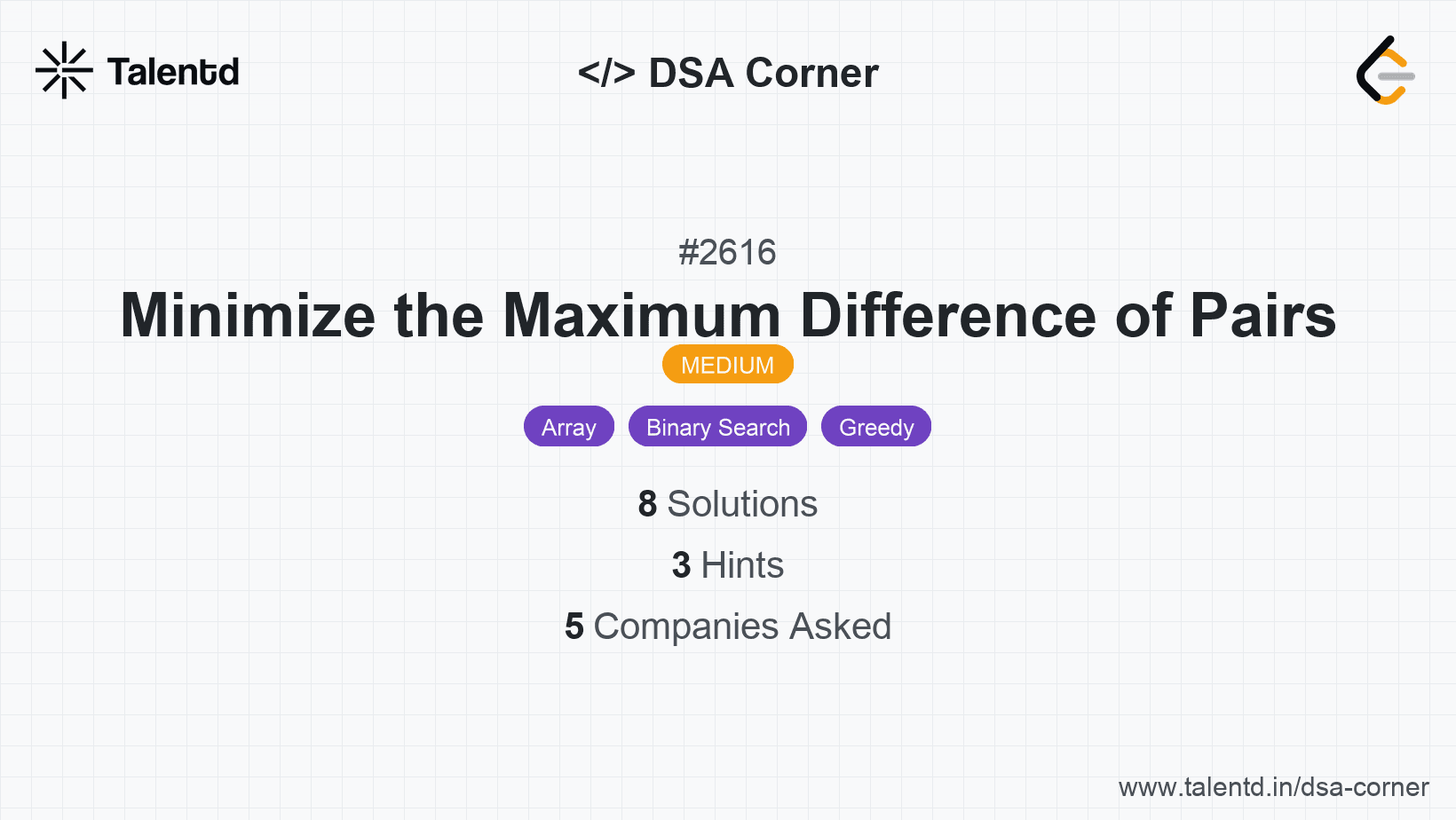
Sponsored
Sponsored
The primary idea of this approach is to first sort the array so that elements which are closer in value are positioned adjacent to each other. This can help in reducing the maximum difference within selected pairs when paired greedily. Once sorted, the greedy approach looks to form pairs consecutively and calculate the differences. By doing so repetitively and minimizing the maximum difference, an optimal solution is achieved.
Time Complexity: O(n log n), dominated by the sorting step.
Space Complexity: O(1), if we ignore the space used by the sorting algorithm.
1#include <stdio.h>
2#include <stdlib.h>
3
4int cmp(const void *a, const void *b) {
5 return (*(int*)a - *(int*)b);
6}
7
8int minimizeMaxDifference(int* nums, int numsSize, int p) {
9 qsort(nums, numsSize, sizeof(int), cmp);
10 int left = 0, right = nums[numsSize - 1] - nums[0];
11 while (left < right) {
12 int mid = (left + right) / 2;
13 int count = 0;
14 for (int i = 1; i < numsSize && count < p; ++i) {
15 if (nums[i] - nums[i - 1] <= mid) {
16 count++;
17 i++; // Skip the next index to ensure each number is used at most once
18 }
19 }
20 if (count >= p) right = mid;
21 else left = mid + 1;
22 }
23 return left;
24}
25
26int main() {
27 int nums[] = {10, 1, 2, 7, 1, 3};
28 int p = 2;
29 int size = sizeof(nums) / sizeof(nums[0]);
30 printf("%d\n", minimizeMaxDifference(nums, size, p));
31 return 0;
32}This C code uses quicksort to sort the input array, followed by a binary search to find the minimal maximum difference possible. The binary search checks for possible maximum differences by counting how many pairs can be formed with that maximum difference.
This approach also begins by sorting the input array, but tackles the problem by employing a min-heap (priority queue). The idea is to manage the smallest differences available and decide pairs greedily based on this. The heap helps efficiently remove and manage differences, ensuring that the maximum difference in the formed pairs remains minimal.
Time Complexity: O(n log n) due to the heap operations.
Space Complexity: O(n) for holding the differences.
1import java.util.PriorityQueue;
2
This Java implementation uses a priority queue to actively manage and utilize the smallest available differences in the sorted array to form the pairs, similar to the approach presented in Python.